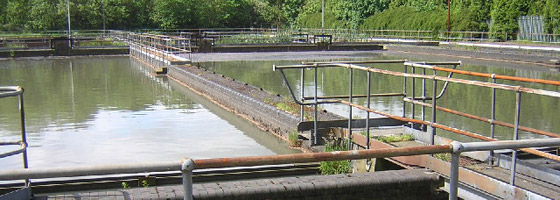Optimizing Wastewater Treatment Plant Efficiency with Multi-Parameter Sondes

Untreated wastewater can devastate fish and other wildlife, lead to oxygen depletion, and contaminate drinking water. One need only look at the consequences caused by combined sewer overflows to appreciate the impact untreated sewage can have on the environment.
This toxic sludge can, for example, turn waterways into breeding grounds for harmful bacteria (such as E. coli). Beach closures and fish consumption advisories often result from excess wastewater entering natural water bodies.
With the advent of sophisticated biological means, the wastewater treatment industry has grown in complexity over the last century and has become capable of removing significant amounts of harmful elements from manmade waste.
A wastewater treatment plant’s principal objective is commonly the removal of nitrogen, a nutrient notorious for causing eutrophication in natural surface waters. High levels of nitrate in the environment can pose problems for both humans and animals. The U.S. Environmental Protection Agency requires nitrate be below 10 ppm to be safe for human consumption. Nitrate exceeding 30 ppm can cause tremendous stress on human health as well as that of aquatic species. Nitrogen often enters the environment as ammonia, which is quickly oxidized to nitrate. The nitrate then creates an oxygen demand, resulting in low dissolved oxygen in surface waters.
Under optimum conditions, the modern wastewater treatment plant is capable of removing 40 to 50 percent of influent nitrogen. To achieve such tremendous results, however, the physical, chemical, and biological processes used must be carefully monitored and maintained. Continuous monitoring systems, or at the least frequent spot checking, is recommended to maximize the efficiency of the nitrification and denitrification processes.
Nitrification is the aerobic process by which ammonia is oxidized into nitrite, then to nitrate. This is commonly accomplished by bacteria including Nitrosomonas and Nitrobacter. The energy released from this process can help to reduce CO2. Next, the aerobic process of denitrification reduces nitrate into nitrite, and finally into inert elemental nitrogen. Bacteria such as Pseudomonas, Achromobacter, and Escherichia are used for this stage. Though some denitrification can occur aerobically, it is most significant under completely anaerobic conditions. Thus, the greatest efficiently can be achieved in a completely anoxic environment.
When paired with analysis of hydraulics and microbial community composition and density, multi-parameter water quality sondes can help improve the overall efficiency of the wastewater treatment process. Such sondes are capable of measuring several water quality characteristics vital to the nitrification and denitrification processes, including DO, temperature, pH, ORP, ammonia, and nitrate. There are set levels or ranges of pH, DO, ORP, ammonia, and nitrate in which conditions are optimum for treatment process. ORP, ammonia, and nitrate readings in particular help determine whether there are acceptable levels of oxidization and reduction, representing whether nitrification and denitrification are at the levels desired.
Sondes can be used for spot checking when paired with a portable display unit. However, it is often preferable to have a continuous monitoring system in place. Thus, water quality sondes can instead be integrated into real-time data logging and management systems, such as those provided by NexSens Technology, to completely automate the process of monitoring these vital parameters.
When using NexSens iChart software, it’s also possible to set up automated alarms based on pre-specified parameter limits. This allows treatment plant officials to be notified immediately via email, text message, or automated call when conditions are not ideal for the nitrification and denitrification processes. Such an addition to a wastewater treatment plan’s management program can both improve the quality of plant effluent as well as reduce operating costs.
For more information about wastewater treatment plant monitoring solutions, contact a Fondriest Environmental application engineer at 888.426.2151 or email customercare@fondriest.com.
Image Credit: www.flickr.com/photos/48722974@N07/4515205247/





rachel frampton
May 4, 2020 at 5:34 am
My husband is working on restoring a dead river, that’s why he’s currently looking for wastewater equipment that may clean the said river. I agree with you that untreated wastewater can kill fishes and other wildlife. It’s great to learn that the wastewater treatment industry has successfully removed amounts of harmful elements from manmade waste.